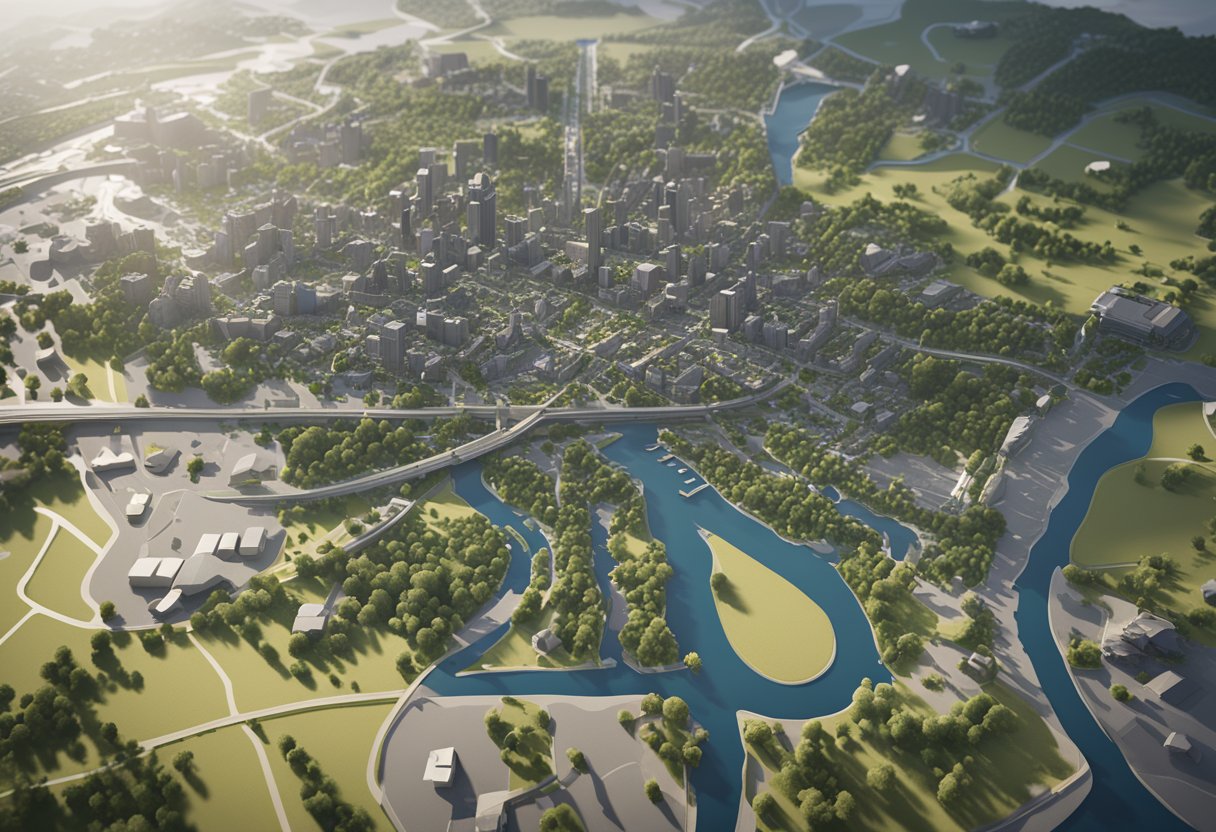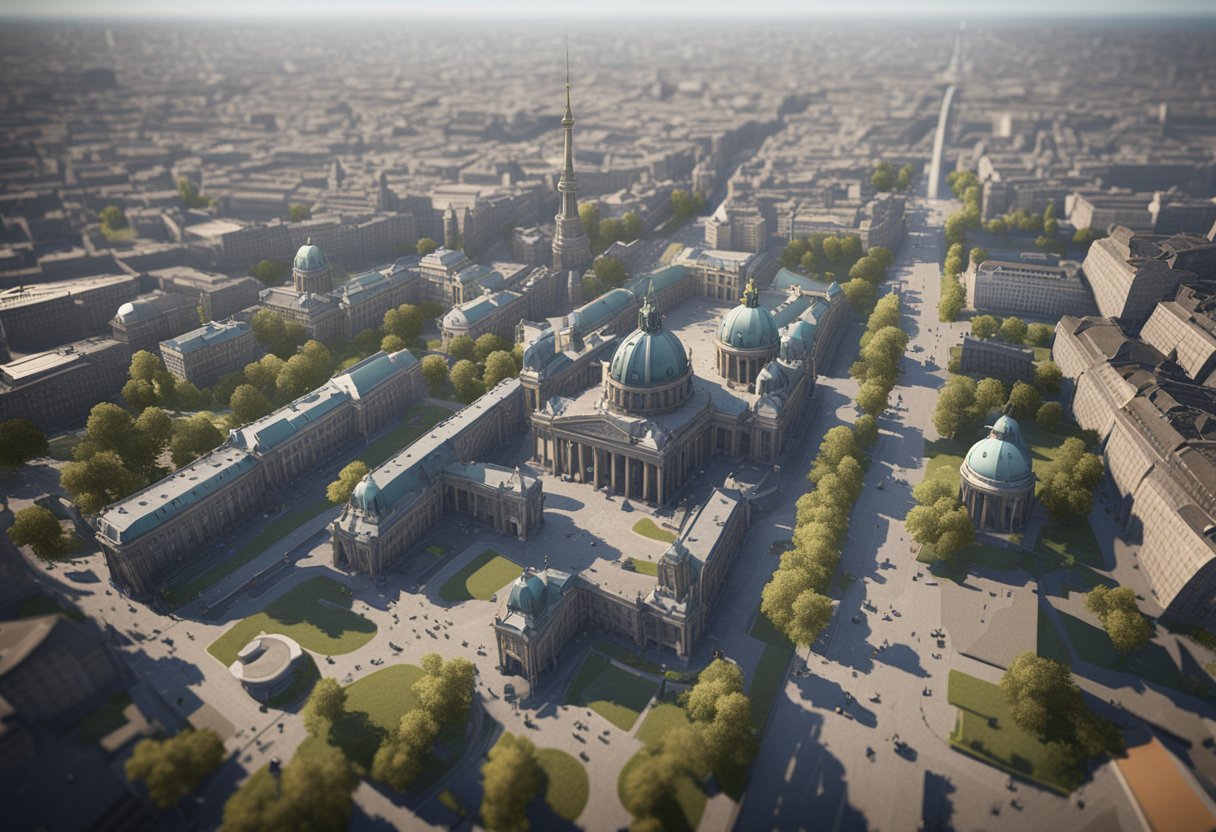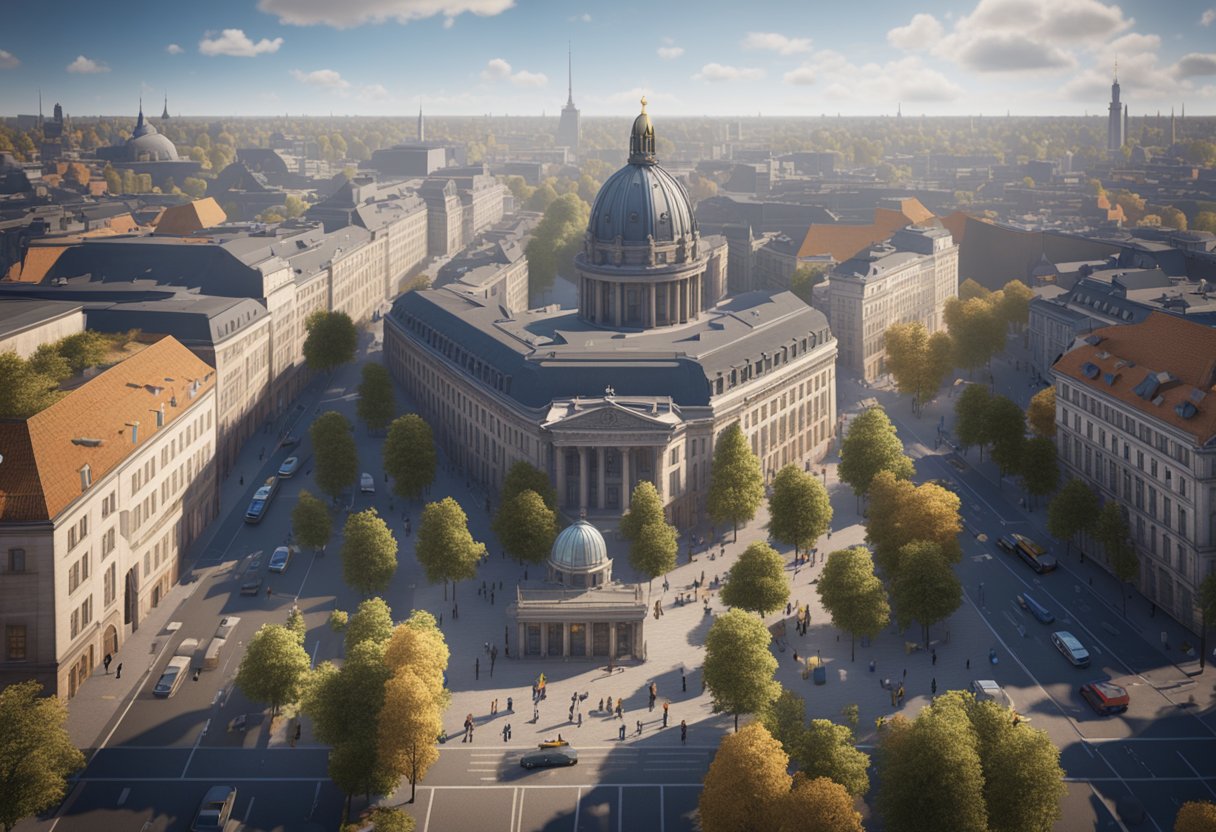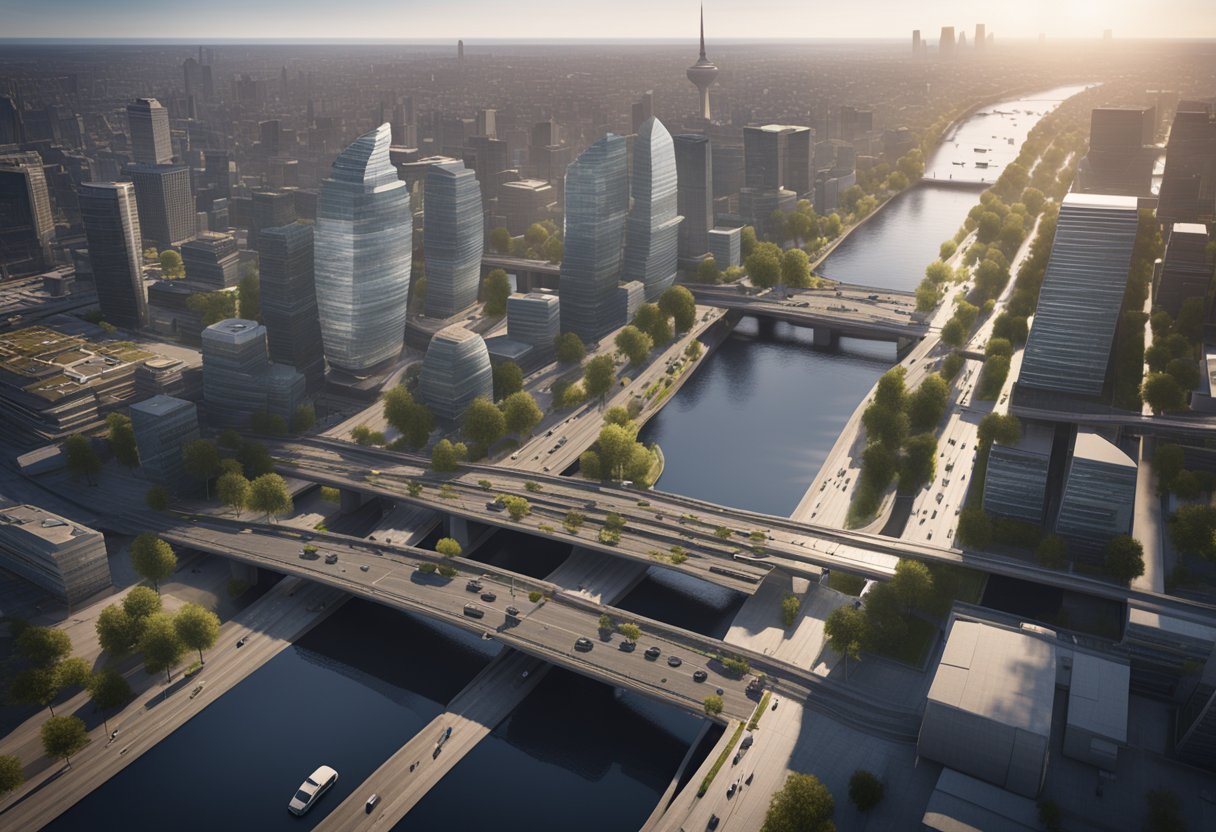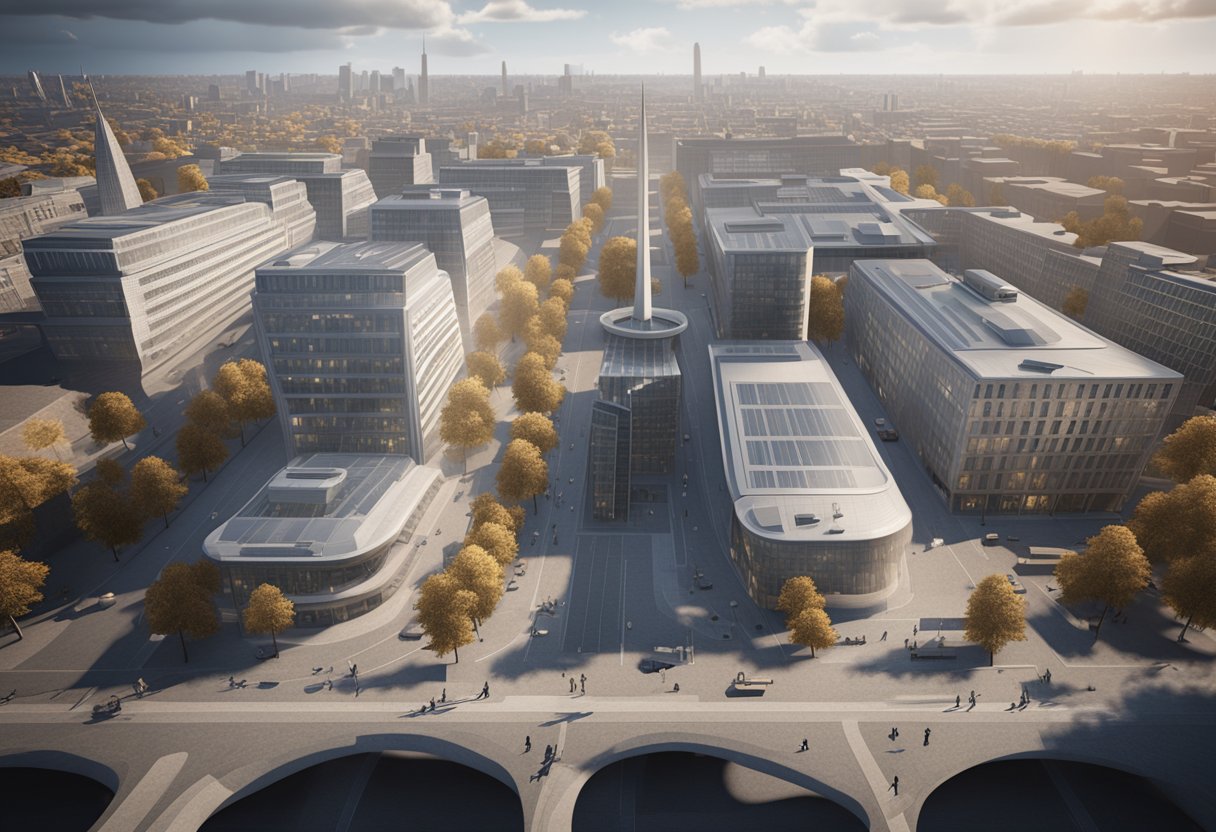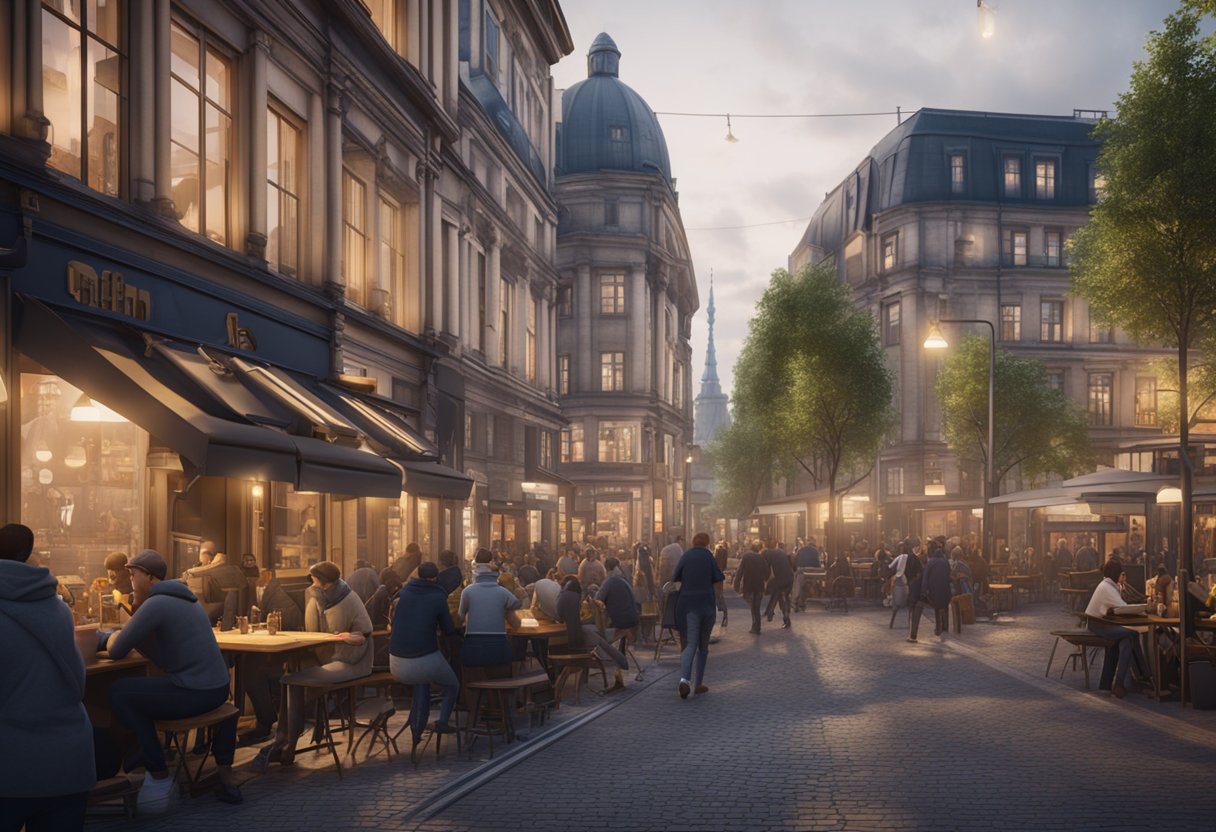Berlin is the capital city of Germany and the most populous city in the country, with a population of about 3.7 million people. In this article is a lot of facts about Berlin.
It is located in the northeastern part of Germany, and its total area covers 892 km². Berlin is also the political and economic decision-making center of Germany. The city has a rich history, and it has played a significant role in shaping the country’s culture, economy, and politics.
Berlin is a cosmopolitan city, with people from over 170 nations living in the city. The city is known for its vibrant arts scene, nightlife, and diverse food culture. Berlin is also a popular tourist destination, with millions of people visiting the city every year. In 2023, Berlin was ranked as the most popular city break destination in Germany and a top European destination. Despite the challenges posed by the COVID-19 pandemic, Berlin’s tourism industry is experiencing a noticeable recovery.
Geography and Climate
Topography
Berlin, the capital city of Germany, is located in northeastern Germany on the banks of the River Spree. The city is situated on the North German Plain, with the nearest mountain range, the Harz, located over 100 km to the southwest. The city’s topography is relatively flat, with the highest point in the city being the Teufelsberg hill, which rises to a height of 120 meters above sea level.
The city is also home to several waterways, including the Spree River, which flows through the city center, and the Havel River, which forms the western boundary of the city. Berlin is also home to several lakes, including the Tegeler See, the Wannsee, and the Müggelsee, which offer a variety of recreational opportunities for residents and visitors alike. The city is also surrounded by forests, including the Grunewald and the Tiergarten, which provide a natural respite from the hustle and bustle of city life.
Climate Data
Berlin has a moderately continental climate, with cold winters and warm summers. The city experiences an average of 166 days of precipitation each year, with an average annual rainfall of around 580 mm. Snowfall is common in the winter months, with an average of 44 cm of snowfall each year.
The average temperature in Berlin in January is around 0°C, while in July, the average temperature is around 18°C. The city experiences an average of 1,700 hours of sunshine each year, with the sunniest months being May through August. The city’s proximity to the Baltic Sea means that it can be affected by sea breezes in the summer months, which can help to moderate temperatures and bring relief from the heat.
Overall, Berlin’s climate is characterized by its variability, with sudden changes in temperature and weather patterns being common throughout the year. Despite this variability, the city’s climate is generally mild, making it a popular destination for visitors throughout the year.
Historical Overview – Facts about Berlin
Berlin, the capital and largest city of Germany, has a rich and complex history that spans over 700 years. The city has been shaped by various political, social, and economic forces, including the Kingdom of Prussia, the German Empire, the Weimar Republic, Nazi Germany, and the Cold War. In this section, we will provide a brief overview of the historical events that have shaped Berlin.
Formation and Growth
Berlin was founded in the 13th century and served as the capital of the Margraviate of Brandenburg, a state of the Holy Roman Empire. In 1701, the Elector of Brandenburg, Frederick III, crowned himself King in Prussia and moved his court to Berlin, making it the capital of the Kingdom of Prussia.
During the 19th century, Berlin experienced rapid growth and became a center of industry, culture, and politics. In 1871, Berlin became the capital of the newly-unified German Empire, which was led by Chancellor Otto von Bismarck.
World War II Impact
During World War II, Berlin was heavily bombed by Allied forces, resulting in significant damage to the city’s infrastructure and population. In 1945, Soviet forces captured Berlin, and the city was divided into four occupation zones, with the Soviet Union controlling the eastern part of the city.
Berlin Wall Era
In 1961, the East German government built the Berlin Wall, which divided the city into East and West Berlin. The wall, which was heavily guarded and fortified, stood as a symbol of the Cold War and the division of Europe.
The wall was finally torn down in 1989, and Germany was reunified in 1990. Today, Berlin is a vibrant and dynamic city that is home to over 3.7 million people. The city has preserved many of its historical landmarks, including the Berlin Wall Memorial, which serves as a reminder of the city’s complex and often tumultuous past.
Demographics and Society
Population Statistics
Berlin is the capital and largest city of Germany, with a population of approximately 3.8 million people as of 2023 [1]. The city has a population density of 4,000 people per square kilometer, making it one of the most densely populated cities in Europe.
Berlin is divided into 12 boroughs, each with its own unique character and population. Pankow is the most populous borough with over 400,000 residents, while Neukölln is the most densely populated borough with over 160,000 people per square kilometer [1].
The city has a diverse population, with people from over 170 nations now living in the city [2]. The majority of the population speaks German, but there are also significant populations that speak Polish and Silesian.
Cultural Diversity
Berlin is a young and cosmopolitan city, with 56% of the population being younger than 45 years old [2]. The city has a vibrant cultural scene, with numerous museums, galleries, and theaters.
The city’s diversity is reflected in its food, music, and festivals. The Berlin International Film Festival, also known as the Berlinale, is one of the city’s most popular events, attracting visitors from around the world.
The city’s cultural diversity is also reflected in its architecture, with a mix of modern and historic buildings. The city has numerous landmarks, including the Brandenburg Gate, the Berlin Wall, and the Reichstag building.
Overall, Berlin is a diverse and dynamic city, with a rich cultural heritage and a population that reflects its cosmopolitan character.
References:
- World Population Review: Berlin Population 2023
- Business Location Center: Demographic, geographic and economic data on Berlin
Economy and Infrastructure
Berlin is the largest city in Germany and one of the major economic centers in Europe. The city’s economy is dominated by the service sector, which accounts for around 84% of all companies doing business in services [1]. According to a report by the IHK Berlin, Berlin’s economy has been growing rapidly in recent years, with the number of people in work and economic output increasing [2].
Commerce and Industry
Berlin is home to a wide range of businesses, from small startups to large corporations. The city has a thriving tech industry, with many startups and established companies operating in the city. Berlin is also a hub for the creative industries, with many artists, designers, and musicians calling the city home.
In addition to the service sector, Berlin has a strong manufacturing industry. The city produces textiles, metals, clothing, porcelain and china, bicycles, and machinery [3].
Transportation Networks
Berlin has a well-developed transportation network, with several airports, train stations, and a comprehensive public transportation system. The city’s airports serve both domestic and international destinations, making it a major hub for air travel in Europe.
Berlin’s public transportation system is operated by the BVG and includes buses, trams, and the U-Bahn and S-Bahn trains. The system is efficient and reliable, making it easy to get around the city.
Berlin is also well-connected by road, with several major highways and a well-maintained network of local roads. The city’s traffic light system is designed to keep traffic flowing smoothly, even during peak hours.
Overall, Berlin’s economy and infrastructure make it an attractive destination for businesses, tourists, and residents alike. The city’s strong service sector, thriving tech industry, and well-developed transportation network make it a hub for commerce and innovation.
References:
- Economy of Berlin – Wikipedia
- Facts & Figures – IHK Berlin
- Berlin – Economy, Manufacturing, Services | Britannica
Government and Administration
Berlin is a federal state, known as a city-state, which means that it is both a city and a state. The city-state governance is headed by the Governing Mayor of Berlin, currently Kai Wegner, who is also the federal state’s premier. The Senate Chancellery serves as his administrative team.
City-State Governance
The city-state of Berlin has a unicameral legislature, the Abgeordnetenhaus, which is responsible for enacting laws and overseeing the city-state’s budget. The Abgeordnetenhaus has 160 members who are elected every five years by the citizens of Berlin.
The city-state of Berlin is also a member of the federal government of Germany. Berlin has three representatives in the Bundesrat, which is the upper house of the German parliament. The Bundesrat represents the interests of the federal states at the federal level and is responsible for approving legislation that affects the states.
Boroughs and Districts
Berlin is divided into 12 boroughs, each with its own local government and district council. The boroughs are further divided into districts, which are the smallest administrative units of the city-state. Each district is governed by a district council, which is responsible for local issues such as schools, parks, and public transportation.
The boroughs of Berlin are:
- Charlottenburg-Wilmersdorf
- Friedrichshain-Kreuzberg
- Lichtenberg
- Marzahn-Hellersdorf
- Mitte
- Neukölln
- Pankow
- Reinickendorf
- Spandau
- Steglitz-Zehlendorf
- Tempelhof-Schöneberg
- Treptow-Köpenick
Each borough has its own unique history and culture, and many of them were once independent cities or towns before being incorporated into Berlin. For example, the borough of Spandau was once a separate city and is located in the western part of Berlin, while the district of Reinickendorf is located in the northern part of the city-state and borders the state of Brandenburg.
Overall, Berlin’s government and administration is complex and diverse, with many different levels of government and local councils responsible for various aspects of the city-state’s governance.
Culture and Lifestyle
Berlin is a city known for its vibrant culture and diverse lifestyle. The city has a rich history and is a hub for arts, entertainment, and fashion. Visitors to Berlin can enjoy a range of activities, from visiting museums and galleries to exploring the city’s parks and gardens.
Arts and Entertainment
Berlin has a thriving arts and entertainment scene with numerous theaters, opera houses, and music venues. The city is home to some of the world’s most famous museums and galleries, including the Alte Nationalgalerie, part of the Museum Island, a UNESCO World Heritage Site. The Berlinale, the largest spectator film festival in the world, is held annually in the city.
Parks and Recreation
Berlin is also known for its parks and gardens. The city has over 2,500 public green spaces, including the famous Tiergarten, a 520-acre park in the center of the city. Visitors can also explore the city’s many lakes and rivers or take a stroll along the Berlin Wall Trail, a 100-mile trail that follows the path of the former Berlin Wall.
In conclusion, Berlin is a city that offers something for everyone. Its rich culture, vibrant nightlife, and beautiful parks make it a popular destination for tourists from around the world. Whether you’re interested in the arts, entertainment, or just want to relax in a beautiful setting, Berlin has something to offer.
Landmarks and Attractions
Berlin is known for its rich history, vibrant culture, and stunning landmarks and attractions. Visitors to the city can explore a mix of historic sites and modern developments, all of which contribute to the unique character of Berlin.
Historic Sites
One of the most iconic landmarks in Berlin is the Brandenburg Gate, which has become a symbol of the city and the country as a whole. This neoclassical monument was built in the late 18th century and has played a significant role in German history, from the Napoleonic Wars to the fall of the Berlin Wall.
Another historic site worth visiting is the Reichstag building, which was originally constructed in the late 19th century to house the German parliament. Today, visitors can tour the building and take in panoramic views of the city from its glass dome.
Museum Island is another must-visit destination for history buffs. This complex of five museums is home to an impressive collection of art and artifacts from around the world, including the famous bust of Nefertiti.
Modern Developments
Berlin is also known for its modern developments, including the Potsdamer Platz. This bustling square is home to a variety of shops, restaurants, and entertainment venues, making it a popular destination for locals and tourists alike.
For those interested in street art, the East Side Gallery is a must-visit attraction. This open-air gallery features murals and graffiti art on a remaining section of the Berlin Wall, and is a testament to the city’s artistic spirit.
The Berlin Cathedral is another modern attraction that is worth a visit. This stunning 19th century cathedral features a mix of architectural styles, including neo-Baroque and neo-Renaissance, and is home to an impressive collection of religious artifacts.
Finally, visitors to Berlin can explore the Teufelsberg, a former Cold War listening station that has been transformed into an outdoor art and culture center. This unique attraction offers stunning views of the city and is a testament to Berlin’s creativity and innovation.
Overall, Berlin’s landmarks and attractions offer a fascinating mix of history, culture, and modernity. Whether one is interested in exploring the city’s rich past or experiencing its vibrant present, there is something for everyone in this dynamic and exciting city.
Education and Science
Berlin is home to a diverse and strong scientific community, with four universities and 22 technology parks. The city also boasts of 70 non-university institutions, making it a center for science and research. The German states are primarily responsible for the educational system, and Berlin covers the whole spectrum, from nurseries, kindergarten, primary education, secondary education, apprenticeships, higher education, adult education, and research.
Universities and Research
Berlin is home to four universities, namely Humboldt University, Free University, Technical University, and Charité University Medicine Berlin. These universities offer a wide range of courses, including medicine, engineering, social sciences, and humanities. In addition, Berlin has several research institutions, including the Max Planck Institute, the Fraunhofer Institute, and the Leibniz Association.
Museums and Galleries
Berlin is also home to several museums and galleries dedicated to science and art. The Gemäldegalerie is one of the most famous art museums in Berlin, housing a collection of European paintings from the 13th to the 18th century. The Kulturforum is another notable cultural center in Berlin, featuring several museums, including the Neue Nationalgalerie and the Berliner Philharmonie. The Alte Nationalgalerie is also a prominent museum, housing a collection of 19th-century art.
Berlin’s scientific community is a significant contributor to the city’s economy and culture, attracting researchers, start-ups, professional associations, interest groups, and other major players in the world of science. This makes Berlin a center for innovation and creativity, with a reputation for being a hub for scientific advancement.
Fun Facts and Oddities
Berlin is a fascinating city with a rich history and a vibrant culture. Here are some fun facts and oddities about the city that you might not know:
- Berlin has more museums than rainy days in a year. With over 180 museums, Berlin is a cultural hub that attracts millions of visitors every year. Even if it’s raining outside, you can spend days exploring the city’s museums and galleries.
- The rubble from the destruction of Berlin during World War II was used to create the Teufelsberg, a hill that is now a popular tourist attraction. The Teufelsberg is also home to a former NSA listening station that was used during the Cold War.
- Berliners love their opera, and the city has two world-renowned opera houses: the Deutsche Oper and the Komische Oper. The Deutsche Oper is known for its classical repertoire, while the Komische Oper is more experimental and avant-garde.
- The Chinese Garden in the Marzahn-Hellersdorf district of Berlin is the largest Chinese garden in Europe. It was a gift from Beijing to Berlin on the occasion of the city’s 750th anniversary in 1987.
- Berlin is the largest city in the metropolitan region of Berlin-Brandenburg, which has a population of over 6 million people. The region is one of the most dynamic economic regions in Europe and is home to many international companies.
- Berlin Dahme is the coldest place in Berlin, with a record low temperature of -26°C. On the other hand, the hottest temperature ever recorded in Berlin was 38.4°C in 2019.
These are just a few of the many fun facts and oddities about Berlin. Whether you’re a first-time visitor or a seasoned traveler, there’s always something new and exciting to discover in this amazing city.

